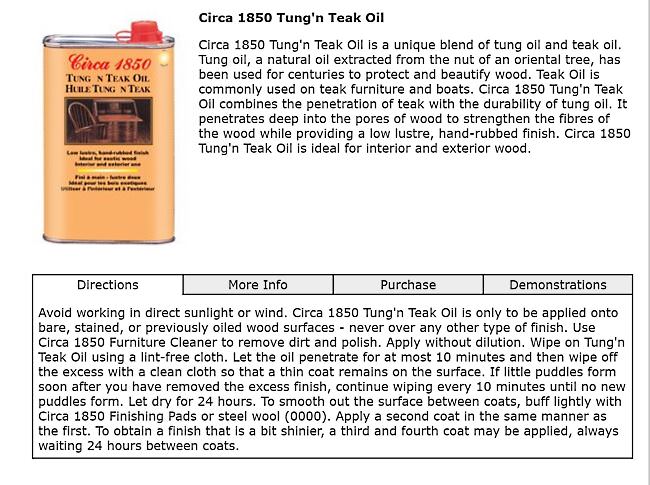zepper
Well-Known Member
- Joined
- Oct 13, 2009
- Messages
- 178
- Reaction score
- 62
Hey guys,
We have a teak table my wife's been keeping on our covered patio. Because it'd be exposed to humidity, I treated it with some of this Circa 1850 Tung 'n' Teak Oil:

Since the table appeared to be bare (unfinished) wood, I figured this would make it look best, while offering some degree of protection.
I guess that was a mistake, though—as now, a year later, the table is covered with black spots. (Mold? Deteriorated finish? Both?)
Can I just sand it down and Varathane it? Or do you think the Varathane won't adhere to it now, as there may be remnants of the tung oil? Thanks for your advice!
We have a teak table my wife's been keeping on our covered patio. Because it'd be exposed to humidity, I treated it with some of this Circa 1850 Tung 'n' Teak Oil:

Since the table appeared to be bare (unfinished) wood, I figured this would make it look best, while offering some degree of protection.
I guess that was a mistake, though—as now, a year later, the table is covered with black spots. (Mold? Deteriorated finish? Both?)
Can I just sand it down and Varathane it? Or do you think the Varathane won't adhere to it now, as there may be remnants of the tung oil? Thanks for your advice!




